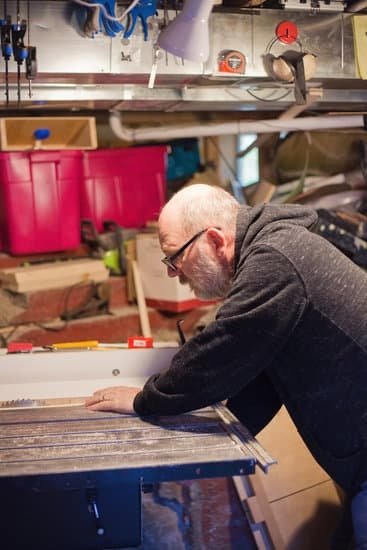Woodworking is a craft that requires precision, skill, and patience. Whether you are building furniture or creating intricate wooden pieces, the quality of the wood you use can greatly impact the final result. One crucial step in the woodworking process is kiln drying the wood.
Kiln drying is a process of removing moisture from wood to make it more stable and suitable for various woodworking projects. In this article, we will explore the importance of kiln drying wood for woodworking projects and provide you with a comprehensive guide on how to achieve optimal results.
Kiln drying offers numerous benefits for woodworkers. By removing moisture from the wood, it minimizes the risk of warping, cracking, or shrinking of the finished piece. This ensures that your woodworking project maintains its structural integrity and remains durable over time. Additionally, kiln drying reduces the weight of the wood, making it easier to work with and handle.
Understanding the process of kiln drying is essential for every woodworker. It involves subjecting freshly cut or rough-sawn lumber to controlled heat and humidity levels in a special chamber called a kiln. This process accelerates the natural evaporation of moisture from within the wood fibers until they reach an optimal moisture content level. The duration and temperature required may vary depending on factors such as wood species, thickness, and desired moisture content.
In the following sections of this article, we will dive deeper into each aspect of kiln drying for woodworking. We will discuss how to select the right wood species for kiln drying, proper techniques to prepare the wood before undergoing kiln drying, steps to set up a kiln drying system efficiently, methods for monitoring and troubleshooting during the drying process, best practices for finishing and storing kiln-dried wood, as well as essential safety precautions.
By understanding and implementing these techniques, you will be able to transform raw wooden materials into high-quality pieces that showcase your craftsmanship while ensuring their long-lasting durability. Let’s explore the world of kiln drying wood for woodworking projects and unlock the full potential of your creations.
What is Kiln Drying
Kiln drying is a process used to remove moisture from wood in order to improve its stability and usability for woodworking projects. When wood is freshly cut, it typically contains a high amount of moisture, which can cause it to warp, crack, or shrink when used in woodworking. Kiln drying helps to reduce the moisture content of the wood, making it more stable and less prone to these issues.
The kiln drying process involves placing the wood in a controlled environment where temperature, humidity, and air circulation can be closely regulated. This allows the moisture within the wood to gradually evaporate without causing any damage. The wood is stacked carefully inside the kiln, with space between each piece to ensure optimal airflow. Heat is then applied to increase the temperature inside the kiln and facilitate evaporation.
There are several benefits of kiln drying for woodworking projects. Firstly, it greatly reduces the risk of warping or cracking in lumber during and after construction. Kiln dried wood also tends to have better dimensional stability, meaning it will maintain its shape and size more accurately over time compared to green or air-dried wood.
Additionally, kiln drying eliminates any pests or insects that may be present in the wood, ensuring a clean and pest-free material for your project. Lastly, kiln dried wood is lighter than green or air-dried wood, making it easier to work with and transport.
Selecting the Right Wood for Kiln Drying
When it comes to kiln drying wood for woodworking projects, selecting the right type of wood is crucial. Not all wood species are suitable for kiln drying, and choosing the wrong wood can result in costly and time-consuming mistakes. Here are some tips to help you select the best wood species for kiln drying and woodworking projects:
- Consider the moisture content: It’s important to choose wood with a suitable moisture content for kiln drying. Green or freshly cut wood typically has a high moisture content, making it unsuitable for kiln drying. Look for wood that has been air-dried or properly seasoned, as this will have a lower moisture content and is more suitable for the drying process.
- Research the specific wood species: Different types of wood have different characteristics and properties when it comes to kiln drying. Some woods are more prone to warping, checking, or splitting during the drying process. Do some research on the specific wood species you are considering to ensure it is suitable for kiln drying and woodworking.
- Consider availability and cost: Some wood species may not be readily available or may be expensive to purchase. Consider your budget and availability when selecting the best wood species for your project. It’s also worth noting that certain rare or exotic woods may require special considerations during the kiln drying process.
| Wood Species | Recommended Uses |
|---|---|
| Oak | Furniture, flooring, cabinets |
| Maple | Furniture, flooring |
| Cherry | Cabinets, fine furniture |
| Walnut | Furniture, decorative objects |
| Mahogany | Furniture, cabinets, musical instruments |
Remember, selecting the right wood species is essential for successful kiln drying and woodworking projects. Take into account moisture content, specific wood characteristics, availability, and cost when making your decision. By choosing the appropriate wood species, you can ensure that your kiln drying process yields high-quality and durable wood for your woodworking projects.
Preparing the Wood for Kiln Drying
Before beginning the kiln drying process, it is important to properly prepare the wood to ensure optimal results. The following are some steps and techniques that can be taken to prepare the wood for kiln drying in woodworking projects.
Firstly, it is essential to properly stack and sticker the wood before placing it in the kiln. Stacking refers to arranging the boards evenly with spacers or sticks called stickers between them. These stickers help promote air circulation around each board, allowing for a more even drying process.
It is crucial to place stickers every foot or so along the length of each board and align them perfectly so that they run parallel to each other. This helps prevent warping and twisting during drying.
Next, proper end sealing should be done on each plank of wood. Sealing the ends helps minimize moisture loss through these vulnerable areas and reduces the risk of checking or splitting. Different types of end sealers can be used such as specially formulated wax-based products or even regular latex paint. Applying a generous amount thoroughly will help create an effective barrier against excessive moisture loss.
Additionally, inspecting and prepping the wood for any defects or damage is vital before kiln drying. Any loose knots or cracks should be trimmed carefully using a sharp chisel or saw, ensuring smooth edges are left behind. It is also recommended to remove any foreign objects like nails or staples from boards, as they can cause damage during drying.
Furthermore, it may be necessary to equalize or precondition freshly cut timber before undergoing kiln drying. By storing lumber in an environment with controlled humidity levels between 25-35%, this allows the moisture content within boards to stabilize gradually before entering into a conventional kiln dryer. Preconditioning helps alleviate stress within wood fibers while minimizing defects like case hardening (a condition where surfaces dry faster than the center, causing splits).
Taking these proper steps and employing these techniques will help ensure that the wood is well-prepared for the kiln drying process. By implementing these preparations, woodworking enthusiasts can maximize their chances of achieving successful drying outcomes and set themselves up for successful projects.
Setting up a Kiln Drying System
For woodworking projects, having a well-designed and efficient kiln drying system is crucial to ensure the wood is properly dried and ready for use. In this section, we will provide you with a step-by-step guide on how to create and set up your own kiln drying system.
Choose the Right Location
The first step in setting up a kiln drying system is selecting an appropriate location. Look for a well-ventilated area that is free from excessive moisture or temperature fluctuations. The location should also have access to electricity, as it will be needed to power the kiln.
Determine the Size of Your Kiln
Next, you’ll need to determine the size of your kiln based on the amount of wood you plan to dry. Consider the maximum length and width of lumber that your kiln can handle. It’s important to choose a size that suits your specific needs but also allows for future expansion if necessary.
Build or Purchase Your Kiln
Once you’ve determined the size of your kiln, you have two options: build it yourself or purchase a pre-made one. If you’re confident in your DIY skills, building your own kiln can be a cost-effective option. However, if you prefer convenience and are willing to invest more, purchasing a pre-made kiln could save you time and effort.
Install Proper Ventilation
Proper ventilation is essential for maintaining consistent airflow throughout the drying process. Ensure that your kiln has vents located at both ends to allow air circulation. Additionally, installing fans inside the kiln can help improve airflow efficiency.
Set Up Temperature and Humidity Controls
Temperature and humidity controls are critical for achieving the desired drying results. Invest in a reliable temperature and humidity monitoring system that allows you to accurately control and adjust these parameters. This will ensure that your wood dries at the optimal rate without risking damage or warping.
Insulate Your Kiln
Proper insulation not only helps maintain a consistent drying environment but also increases the overall efficiency of your kiln. Insulate the walls, floor, and ceiling of your kiln using materials such as foam board or fiberglass insulation.
Create Stacking Supports
Lastly, create stacking supports inside your kiln to ensure proper airflow around each piece of wood. These supports should be sturdy enough to withstand the weight of the lumber while still allowing air to circulate freely.
By following these steps, you can set up a functional kiln drying system that will effectively dry your wood for woodworking projects. Remember to always prioritize safety and carefully monitor the drying process to achieve optimal results.
Monitoring the Drying Process
Once you have prepared the wood and set up your kiln drying system, it is crucial to monitor the drying process to ensure optimal results. Monitoring allows you to make any necessary adjustments and avoid potential issues that may arise during the drying process. Here are some step-by-step instructions on how to effectively monitor the drying process and avoid common pitfalls.
- Measure and record moisture content: Use a moisture meter to measure the moisture content of the wood regularly throughout the drying process. Record these measurements in a logbook or spreadsheet for easy tracking. This will help you track how quickly the wood is drying and determine when it has reached its desired moisture content.
- Monitor temperature and humidity: Keep a close eye on both temperature and humidity levels inside the kiln. Install thermometers and hygrometers at different locations within the kiln to ensure accurate readings. Maintain optimal conditions by adjusting ventilation, heat, and steam as needed.
- Check for defects or issues: Inspect the wood for any signs of defects or issues during the drying process. Look out for surface checks, warping, discoloration, or mold growth. Address these problems promptly before they worsen or affect other pieces of wood in the kiln.
- Rotate and re-stack if necessary: If you notice uneven drying or areas with higher moisture content, consider rotating or re-stacking your wood inside the kiln. This will help promote more uniform drying across all pieces of wood. Pay attention to air circulation within your kiln to ensure even heat distribution.
- Regularly clean your kiln: Proper maintenance of your kiln is essential for effective monitoring of the drying process. Regularly clean out dust, debris, and any accumulation of mold or fungi that may hinder proper airflow or affect wood quality.
By following these step-by-step instructions, you can effectively monitor the drying process and avoid common pitfalls that may arise during kiln drying. Regular monitoring will help you achieve the desired moisture content and quality of wood for your woodworking projects.
Troubleshooting
Common Issues during the Kiln Drying Process
Kiln drying wood for woodworking projects can be a complex process, and there are several common issues that may arise during the drying process. It is important to address these issues promptly to ensure the best results and minimize waste. Here are some of the most common issues encountered during kiln drying and their solutions:
Uneven Drying
One of the main challenges in kiln drying wood is achieving an even distribution of moisture throughout the lumber. Uneven drying can result in warping, cracking, or checking of the wood. To address this issue, it is crucial to stack and load the lumber properly in the kiln. Make sure that there is adequate airflow between each piece of wood, allowing the moisture to evaporate evenly from all surfaces.
If you notice any signs of uneven drying during the process, consider redistributing or rearranging the lumber to promote better airflow. Additionally, adjusting the temperature and humidity levels in the kiln according to the specific requirements of the wood species being dried can also help achieve more uniform results.
Mold and Fungus Growth
Another common issue that can occur during kiln drying is mold and fungus growth on the surface of the wood. This problem often arises when moisture levels are too high or inadequate air circulation within the kiln. To prevent mold and fungus growth, it is essential to maintain proper airflow and control humidity levels.
Regularly inspecting and cleaning filters, vents, and fans within your kiln system can help ensure proper air circulation. Additionally, monitor moisture levels closely using a moisture meter throughout each stage of drying. If mold or fungal growth does occur on any pieces of wood, remove them immediately from the kiln to prevent further contamination.
Casehardening
Casehardening refers to a condition where the outer portion of the wood dries quicker than the inner core, resulting in tension and stress within the lumber. This issue can lead to excessive splitting or warping of the wood after it is removed from the kiln. To avoid casehardening, it is important to control drying rates carefully.
Gradually increase the temperature and drying rate during the initial stages of kiln drying to allow for more even moisture evaporation throughout the wood. It is also recommended to use proper stacking methods and ensure adequate airflow around each piece of lumber. Monitoring moisture levels regularly and adjusting drying conditions accordingly can help prevent casehardening and promote a more successful drying process.
By addressing these common issues promptly and implementing appropriate solutions, you can optimize your kiln drying process and achieve high-quality, properly dried wood for your woodworking projects. Remember that practice makes perfect, and with experience, you will become more proficient at troubleshooting and obtaining desirable outcomes from your kiln-dried lumber.
Finishing and Storing Kiln-Dried Wood
Once the wood has been successfully kiln dried, it is important to take proper care of it to preserve its quality. This involves both finishing the wood and ensuring it is stored correctly. By following best practices for finishing and storing kiln-dried wood, you can extend its lifespan and maintain its optimal condition for your woodworking projects.
Finishing Kiln-Dried Wood
- Sanding: Before applying any finish, it is crucial to sand the surface of the kiln-dried wood. Start with a coarse-grit sandpaper and gradually work your way up to finer grits for a smooth finish. Make sure to remove any rough edges or imperfections before proceeding.
- Selecting a Finish: There are various finishes available for wood, including oil-based finishes, water-based finishes, lacquers, and polyurethanes. Choose a finish that matches your desired outcome and the type of project you are working on.
- Applying the Finish: Follow the manufacturer’s instructions on how to apply the chosen finish. It is recommended to apply multiple thin coats rather than one heavy coat for better absorption and an even finish. Allow each coat to dry completely before applying the next.
Storing Kiln-Dried Wood
- Proper Environment: Store your kiln-dried wood in a clean, dry environment away from moisture and direct sunlight. Ideally, maintain a consistent temperature and humidity level within the storage area to prevent warping or cracking of the wood.
- Stack with Care: Place evenly-sized pieces of wood on top of each other when stacking for storage. Use small spacers between each layer to allow proper airflow and avoid any potential damage due to excessive weight or pressure.
- Cover or Wrap: Protect the stacked wood from dust and debris by covering it with a breathable fabric or plastic sheeting. This will help to maintain its cleanliness and prevent any unwanted marks or scratches.
By practicing these best practices for finishing and storing kiln-dried wood, you can ensure that your woodworking projects are built from high-quality materials that will stand the test of time. Taking the time to properly finish and store your kiln-dried wood will not only enhance the overall appearance of your work but also contribute to its longevity.
Safety Measures
When it comes to kiln drying wood for woodworking, safety should always be a top priority. The process of kiln drying involves exposing wood to high temperatures and potential hazards, so taking the necessary safety precautions is crucial. By following these essential safety measures, you can ensure a safe and successful kiln drying experience:
- Personal Protective Equipment (PPE): Always wear appropriate PPE when operating or working near a kiln drying system. This includes heat-resistant gloves, safety glasses or goggles, and clothing that covers your arms and legs to protect against burns or splinters.
- Adequate Ventilation: Ensure that the kiln area has proper ventilation to prevent the buildup of harmful gases or fumes during the drying process. This can be achieved through the installation of exhaust fans or by opening windows and doors for proper air circulation.
- Temperature Regulation and Fire Safety: Regularly check and maintain temperature controls on your kiln to prevent overheating or fires. Keep a fire extinguisher nearby and have a clearly marked emergency exit in case of any unexpected accidents.
- Electrical Safety: If your kiln requires electricity, make sure all electrical connections are properly grounded to avoid electrical hazards. Inspect cords for any signs of damage before each use.
- Handling Heavy Loads: Kiln-dried wood can be heavy, so use proper lifting techniques when moving or handling wood pieces to avoid strains or injuries. Utilize assistive equipment such as dollies or lifting straps when necessary.
- Proper Storage: After kiln drying the wood, store it in a designated area away from flammable materials and sources of ignition. Ensure that the storage space is well-ventilated and organized to prevent accidents or injuries caused by falling objects.
By implementing these safety measures, you can minimize risks associated with kiln drying wood for woodworking projects and ensure a safe working environment for yourself and others involved in the process.
Remember, safety should always come first when it comes to working with wood, especially in high-temperature environments like kilns. By following these precautions, you can enjoy the benefits of kiln dried wood while keeping yourself and your workshop safe.
Conclusion
In conclusion, kiln drying wood is an essential step for successful woodworking projects. By understanding the importance of kiln drying and following the proper steps and techniques, woodworkers can greatly enhance the quality and stability of their finished products.
One of the key benefits of kiln drying is that it reduces moisture content in the wood, which prevents warping, splitting, and cracking. This is especially important for woodworking projects that require precise measurements and tight joinery. Kiln dried wood also has a lower risk of insect infestation and decay, ensuring that your creations will last for years to come.
When selecting wood for kiln drying, it’s important to choose the right species that can withstand the process without losing its structural integrity or desirable characteristics. Hardwoods such as oak, maple, and walnut are often preferred due to their durability and aesthetic appeal. Proper preparation of the wood before kiln drying, including sealing the ends and removing any contaminants or debris, is crucial for achieving optimal results.
Setting up a kiln drying system can be a complex task but with careful planning and attention to detail, it can be accomplished successfully. Regular monitoring of the drying process is necessary to ensure that the wood is progressing at an appropriate rate and to prevent over-drying or uneven moisture distribution. It’s also important to address any troubleshooting issues promptly to minimize potential damage or waste.
Frequently Asked Questions
Can I kiln dry wood at home?
Yes, it is possible to kiln dry wood at home but it requires careful planning and proper equipment. Kiln drying involves using controlled heat and airflow to reduce the moisture content of the wood. To kiln dry wood at home, you will need a kiln or a well-insulated space with good temperature and humidity control.
Depending on the size and type of wood, the drying process can take several weeks or even months. It is important to monitor the moisture content regularly throughout the process to prevent over-drying which can lead to cracking or warping of the wood.
What is the fastest way to dry wood for woodworking?
The fastest way to dry wood for woodworking is by using a kiln or an industrial-scale drying system specifically designed for this purpose. These systems typically employ high temperatures and controlled humidity levels to accelerate the drying process considerably compared to natural air drying methods. However, if you don’t have access to a kiln, there are alternative methods that can speed up the drying time.
These include using fans and dehumidifiers in well-ventilated spaces or exposing the wood to direct sunlight which can help remove moisture more quickly. It’s important to note that while these methods can reduce drying time, they may not achieve the same level of quality as slower, more controlled drying methods.
Can I use my oven as a kiln to dry wood?
Using your oven as a kiln to dry wood is generally not recommended due to safety concerns and limitations of household ovens. Ovens are not designed for prolonged high-temperature operation required for efficient wood drying and can pose fire hazards if used improperly.
Additionally, operating an oven at such high temperatures for extended periods may damage its internal components and negatively affect its functionality for cooking purposes in the future.

Hi everyone! I’m a woodworker and blogger, and this is my woodworking blog. In my blog, I share tips and tricks for woodworkers of all skill levels, as well as project ideas that you can try yourself.





